I headed off from my house one Saturday early in my biking career, drooling with excitement for the mountain bike ride I’d been awaiting all week. Then, before I had reached the trailhead, I noticed my rear tire was significantly low. I felt like I was riding through mud – on the pavement! Remembering a gas station with an air pump on my way to the trailhead, I figured I could easily pump up my tire without a wasted trip back to my house.
But, when I tried to inflate my mountain bike tire… AAACK! Foiled! The gas station had a standard car pump and, new biker that I was, I forgot my bike tires have a presta valve. A week of hungering for a mountain bike ride… RUINED! All because of a puny little valve. Oh, the angst. Do NOT let this happen to YOU!
Unless you grew up biking, most of us are so familiar with car tire valves, we assume it’s the only type of valve. In truth, car tires use what’s called a Schrader valve. It’s about the diameter of a pencil and has a tiny “button” in the center that, when pressed, allows air in or out, but holds air pressure relatively steady when not compressed.
Presta valves, on the other hand, are significantly skinnier than Schrader valves. They don’t have a button in the center of the valve and instead have an attached screw mechanism at the tip. When screwed closed, it holds air pressure in the tire. When unscrewed, you can pump air in or release air out.
Presta ValveCurrently, presta valves are the most common type of valve on high-end mountain bikes. Racers and high performance cyclists prefer them. They’re becoming increasingly common – even on mountain bikes on the low-end of the price spectrum.
Why, you ask. (Perhaps with a significant number of swear words as you kick your flat mountain bike tire or throw your useless Schrader pump.) Why use an uncommon, obscure valve that doesn’t fit a standard pump? Is it just to make mountain bike newbies suffer? Why? Why?
No, it’s not just to frustrate you.
Presta valves are generally more reliable and allow pumping your tires to a more precise pressure. By virtue of design, all Schrader valves release tiny amounts of air over time, requiring occasional “topping off”. Having a cap on the valve can significantly decrease the air loss, but it still means, at any given moment, your tire may not have the pressure you pumped it to.
A casual mountain bike rider may not know what pressure they should be riding or even notice when the pressure is off. But for high-speed riders, tire pressure can have a significant impact on speed, race performance and riding safety.
The screw on the tip of the presta valve allows a rider to close off the tube at the desired pressure and not require a cap. Barring an unnoticed leak or a puncture during a ride, the tire will now reliably hold the pressure you want.
You can inflate a presta valve with a common air pump, such as at a gas station or portable air compressor.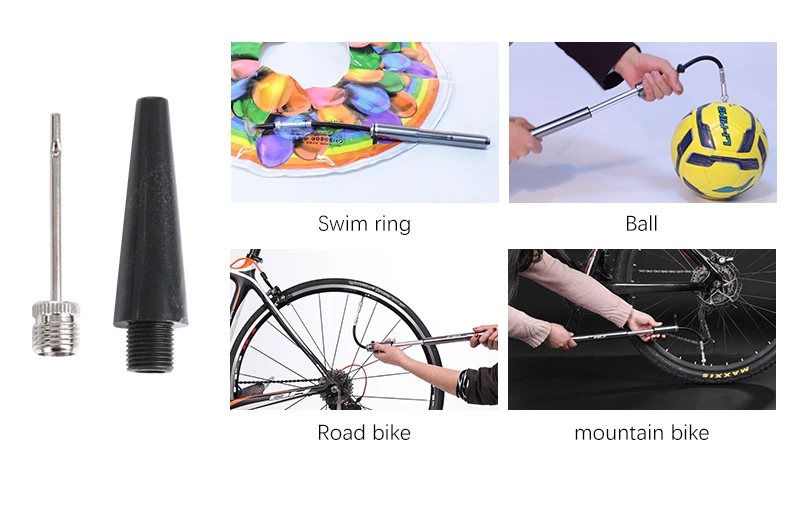 However, you need an adaptor that’s ridiculously small in size but huge in importance: a presta valve adaptor.
However, you need an adaptor that’s ridiculously small in size but huge in importance: a presta valve adaptor.
Here are the steps to inflate a presta valve with a standard pump:
Since more and more mountain bike tires use presta valves, most bike pumps are either universal (meaning one hole works on both presta and Schrader valves) or they have two separate holes, one for each valve type. However, you should always carry a valve adaptor when you ride for situations when a standard pump is the only option. Some cyclists do this by keeping a valve adaptor screwed on their tire valve all the time. Just make sure the valve is screwed closed before putting the adapter on!
Presta valve adapters are extremely tiny and portable. This also means they’re easy to lose. The good news is they’re fairly cheap. I usually buy a handful at a time and keep one in my garage bike tools and one in my portable tool kit for rides. Having one in your glove box isn’t a bad idea, either!
This also means they’re easy to lose. The good news is they’re fairly cheap. I usually buy a handful at a time and keep one in my garage bike tools and one in my portable tool kit for rides. Having one in your glove box isn’t a bad idea, either!
All bike shops sell valve adapters and some general sporting goods shops and hardware stores carry them as well. You can also buy valve adapters online easily and cheaply.
This simple question actually does not have a straightforward answer. The simple rule is to refer to the tire manufacturer’s specs on tire pressure that are printed on the sidewall of your tires. Consensus of riders is that mountain bike pressure should be 30 psi on the front tire and 33 psi for the rear tire. This information should serve you well if you have only a casual interest in mountain biking and are doing entry-level to intermediate trails two or three times a month.
However, if you spend a significant amount of time on your bike (and an equally significant amount of time dealing with pinch flats, blowouts or skidding out on corners), you’ll want to dive deeper into the science of bike tire pressure. DIY Mountain Bike has a fabulous, in-depth article and survey results examining appropriate bike tire pressure.
DIY Mountain Bike has a fabulous, in-depth article and survey results examining appropriate bike tire pressure.
The fastest and easiest (and cheapest) way to check your tire is with your hand. When you squeeze it, it should be hard in the center with only a tiny bit of give farther out on the tire near the treads. A hand test, however, is – not surprisingly – not very accurate!
If you want to be precise, a tire pressure gauge will be necessary. But be warned: tire pressure gauges are notoriously unreliable and the sensitive sensors are easily broken. For my recommendation, read my tire pressure gauge product review.
If you’re in a pinch (perhaps literally!), and you don’t have a universal pump or a valve adapter, you can modify a tube cap to create a functional adapter using a presta valve CAP.
 Find the place on the valve cap where it gets smaller. Cut at that spot with scissors or whatever you have that will do the trick. Throw the tiny tip away.
Find the place on the valve cap where it gets smaller. Cut at that spot with scissors or whatever you have that will do the trick. Throw the tiny tip away.Remember to screw the tire valve shut after inflating! I know you’re tired of hearing that, but it’s important.
Now that you know everything you need to about how to inflate a presta mountain bike tire, you’ll never find yourself hungering for a ride and find yourself deterred by a standard tire pump!
And don’t forget to screw the presta valve closed…
Professional writer Kat Jahnigen was 2 miles from the nearest village – and roughly 2,310 miles – from the nearest English-speaking town – when her bike tire burst. At that time, she was a college student on a bike trip across the desolate, rocky island of Crete. It suddenly occurred to her that it would’ve been good to learn some basic bike repairs before setting off on a solo bike trip.
Check out Kat’s website WriteHire at writehire.net.
❚ The products mentioned in this article are selected or reviewed independently by our journalists. When you buy through links on our site we may earn an affiliate commission, but this never influences our opinion.
It might be a basic thing, but being able to pump up your bike’s tyres is an essential skill for any cyclist.
A lot of you will already know how to do this, but for those who don’t, the different valve types, pumps and, more importantly, what pressure to pump your tyre can be a bit overwhelming. Let us guide you through the process.
Pneumatic tyres were invented to get over the bone-jarring ‘ride-quality’ of solid wheels.
The air inside acts as a spring, providing suspension for you and allowing the tyre to conform to the terrain providing better traction and grip.
Pumping up your tyres is a quick job that can easily improve your enjoyment while riding. Running the wrong tyre pressure will negatively affect the way that your bike rides and can also make your bike more prone to punctures.
If you’ve never repaired a puncture before, you might not have considered how your tyres hold air inside.
The vast majority of bikes will use an inner tube. This is a doughnut shaped airtight tube that sits inside the tyre, with a valve for pumping it up that you see on the outside.
The tyre, when inflated by the tube, is what grips the ground and provides protection from punctures.
You may have heard of tubeless tyres, which forgo a tube and use a special rim and tyre to seal air without the need for a tube. These usually require tubeless sealant inside, which is a liquid that plugs any points where air is escaping.
Tubeless tyres are more commonly found in mountain biking, but the technology is migrating to road bikes.
The tubeless sealant also plugs punctures, and no tube means a much lower risk of pinch flats – that’s when your inner tube is pinched by the rim, causing a puncture. Tubeless tyres can, therefore, be run at lower pressures than those with an inner tube setup, for improved comfort, speed and traction.
At the very high end, you also get tubular tyres. This is essentially a tyre with the tube sewn into it, but they are rarely seen or used outside of professional racing.
Inflating your tyres to the correct pressure is an essential part of bike maintenance.Oli Woodman / Immediate Media
Running your tyres at either too high or too low a pressure can be potentially dangerous, as well as negatively impact the handling of your bike.
We’ll discuss later what the correct pressure is, but for the moment let’s look at possible problems.
An under-inflated tyre will rob your efficiency and leave you susceptible to annoying punctures.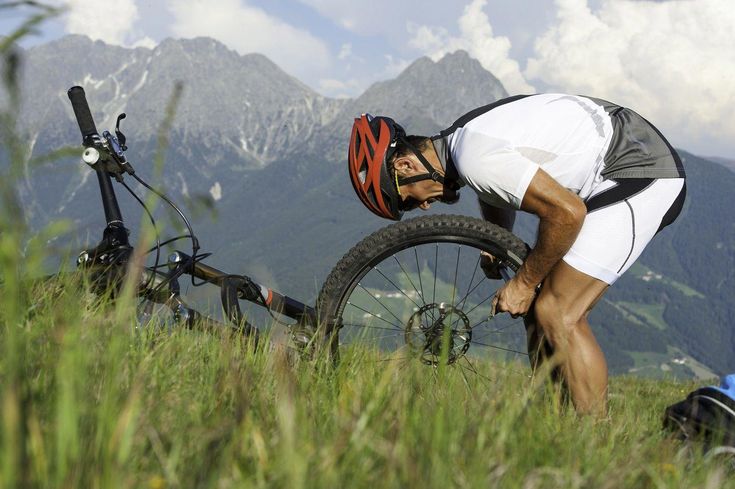 Oli Woodman / Immediate Media
Oli Woodman / Immediate Media
If you run your tyres at too low a pressure, the tyre can wear prematurely. Excessive flexing in the sidewall can lead to the casing cracking and the tyre becoming fragile. This could eventually lead to a blowout.
Excessively low pressures also increase your susceptibility to punctures and may even result in your tyres literally rolling off the rim if you corner at speed (the pressure inside is what holds your tyre on the rim).
Damage can also be caused if the tyre deflects all the way down to the rim. This can result in dents or cracking, potentially compromising your wheel and resulting in an expensive replacement.
Conversely, running too high a pressure could result in your tyre blowing off the rim with explosive consequences. That pressure can also squeeze the wheel because if it’s too high the compressive force on the wheel can be too high.
In terms of handling, a low pressure can result in compromised handling with the tyre squirming under load. Your bike will feel difficult to control, slow and sluggish.
Your bike will feel difficult to control, slow and sluggish.
On the other hand, too high pressure can result in reduced grip and a harsh ride, leading to fatigue and in turn impacting handling.
There are two likely reasons why your tyre is flat. Either you have a puncture or your tyre has just deflated over time.
If you have a puncture, we’ve put together a comprehensive guide on how to fix a puncture.
Glueless patches are great for a quick fix, while a more traditional kit is a versatile option when you have a bit more time.
All tyre systems will leak air slowly because tubes aren’t completely airtight. For example, standard butyl tubes hold air fairly well compared to lightweight latex tubes, which leak comparatively quicker. Even tubeless setups will slowly leak air.
Old tubes will leak more air than new ones, so if yours haven’t been replaced in a while they may be worth looking at. Less likely, but also a possibility (especially on older tubes), is that the valve is no longer sealing properly.
The best way to check what’s going on is to try pumping up the tyre. If it holds air then there’s likely nothing more you need to do. If it doesn’t, then you likely have a puncture.
If it leaks air slowly overnight, either you have a slow puncture or simply an old tube that needs replacing.
The first thing you’ll need to know before pumping up your tyre is what valve type is fitted.
The valve is the key part that keeps air in the tyre, but also lets you inflate (or deflate) the tyre.
The Schrader valve is also used for car tyres.Oli Woodman / Immediate Media
Schrader valves are more common on lower-end bikes and, in the past, mountain bikes. The same valves are used on car tyres.
The valve assembly is a hollow tube with a sprung valve that closes automatically and screws into the external body. A pin extends up from the valve and is usually flush with the end of the outer tube.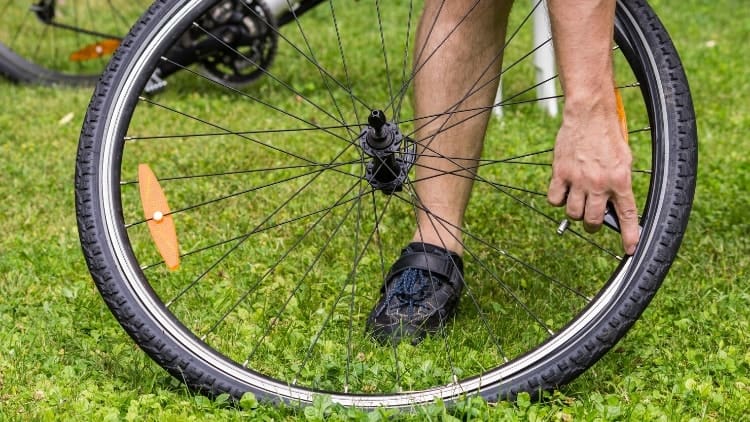 This pin can be depressed to let air out.
This pin can be depressed to let air out.
The dust cap on Schrader valves is an important part of the design that can help fully seal the valve if it is not completely air-tight. It essentially provides a secondary ‘backup’ seal.
The sprung design of the valve is a little susceptible to contamination from dirt or grit so it’s important to protect it too.
Presta valves such as this one are longer and narrower than the Schrader type valve.Oli Woodman / Immediate Media
You will only find Presta valves on bicycles.
They originated on road bikes where the narrower valve (6mm vs 8mm for a Schrader) meant a smaller valve hole (typically the weakest part of a rim) on narrow road wheels.
Nowadays they are seen on both mountain bikes and road bikes. Rather than use a spring, the valve is secured with a nut that holds it closed, though the valve itself is sealed ‘automatically’ when pressure inside the tyre pushes it shut.
With a Schrader valve, you can simply press the pin to release air, but with a Presta valve you first have to unscrew the little locknut.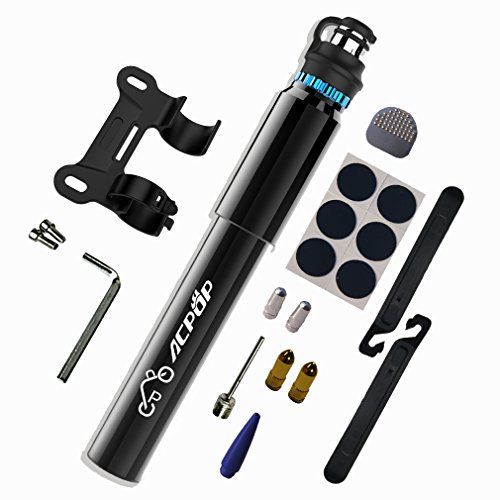 Don’t worry about the nut coming off the end of the valve body because the threads are peened to stop that happening.
Don’t worry about the nut coming off the end of the valve body because the threads are peened to stop that happening.
There seems to be a myth that Presta valves deal with high pressures better – this probably isn’t true considering there are Schrader valves that can withstand many hundreds of psi (way more than you’ll ever need in your tyre).
Presta valves are definitely a little more delicate than Schrader valves, though. It’s quite easy to knock the threaded internal valve body and bend or break it, so a bit more care needs to be taken. However, valve cores are easily replaceable with standard tools.
In comparison, on Schrader valves, this requires a proprietary tool.
Presta valves may come with a lockring that secures the valve body against the rim. This can make them a little easier to inflate. The dust cap is not essential to seal it, but helps keep the valve clean.
The only other type of valve you may come across is a Dunlop (also known as Woods) valve. This has a similar base diameter to a Schrader valve, but can be inflated with the same pump fitting as a Presta valve.
This has a similar base diameter to a Schrader valve, but can be inflated with the same pump fitting as a Presta valve.
These are very popular on town/upright bikes in Europe and elsewhere in the world, but you’re very unlikely to come across one in the UK or in the US.
A tubeless valve can be difficult to distinguish from a regular Presta valve.Oli Woodman / Immediate Media
Valves for tubeless setups are attached directly to the rim, rather than being part of an inner tube.
More often than not, they are Presta-type, but Schrader ones do exist.
Oli Woodman / Immediate Media
If you’ve got a Schrader type valve, such as the one shown above, then the first thing you need to do is remove the dust cap (if there is one in place).
Oli Woodman / Immediate Media
Simply unscrew the cap anticlockwise to reveal the valve.
Oli Woodman / Immediate Media
Now attach the head of your pump.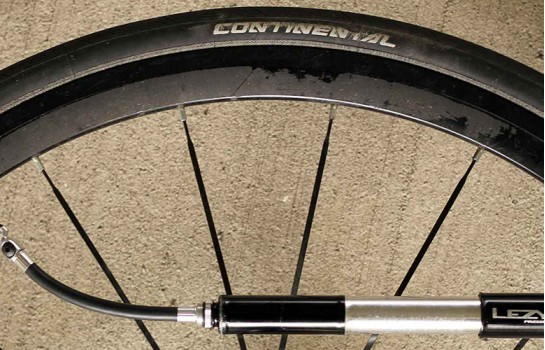
Oli Woodman / Immediate Media
Inflate the tyre to a value between the minimum and maximum stated on the tyre sidewall and remove the pump. You’re done!
Oli Woodman / Immediate Media
If your bicycle has a Presta type valve such as this one then you will first have to remove the plastic valve cap (if fitted).
Oli Woodman / Immediate Media
The plastic cap will reveal another threaded cap to the valve.
Oli Woodman / Immediate Media
Unscrew the thread but be careful to not damage it in the process.
Oli Woodman / Immediate Media
Now attach the head of your chosen pump to the open valve and inflate the tyre to a pressure that’s between the minimum and maximum stated on the tyre’s sidewall.
Inflate the tyre to the desired pressure and remove the pump.
Oli Woodman / Immediate Media
Finally, close the valve by screwing it clockwise and reinstall the plastic valve cap.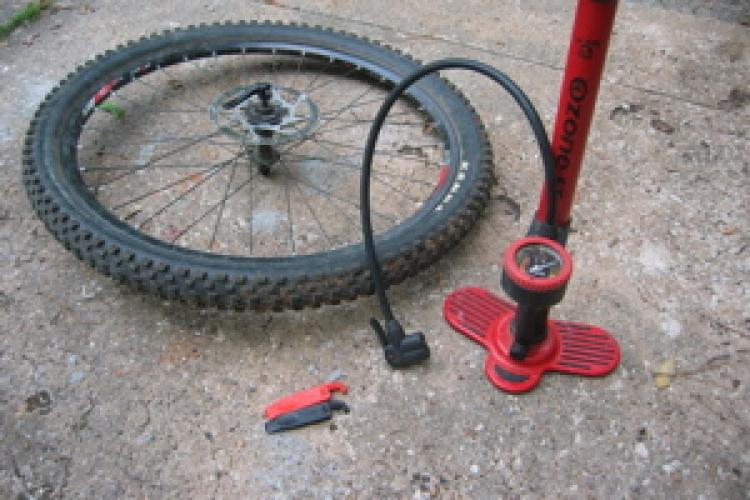
If you have a tubeless setup, or tubes setup with sealant inside, then it’s worth taking a few extra steps to avoid gunking up your pump.
Turn the wheels so the valves are at the bottom and leave for a few minutes so any sealant can drain out.
Turn the wheels so the valves are at the top and pump up your tyres. The same goes when deflating tyres to prevent goop spraying everywhere.
We’d say that, if you can only own just one type of pump, get a track pump for home use because it’s efficient, quick and easy to use.
However, there’s no doubt that having an additional mini-pump for when you’re out on the road is rather useful – otherwise you risk being stranded at the roadside in the event of getting a puncture.
We’ve already got a guide on choosing the best bike pump for your needs, but here a few recommendations for you to consider.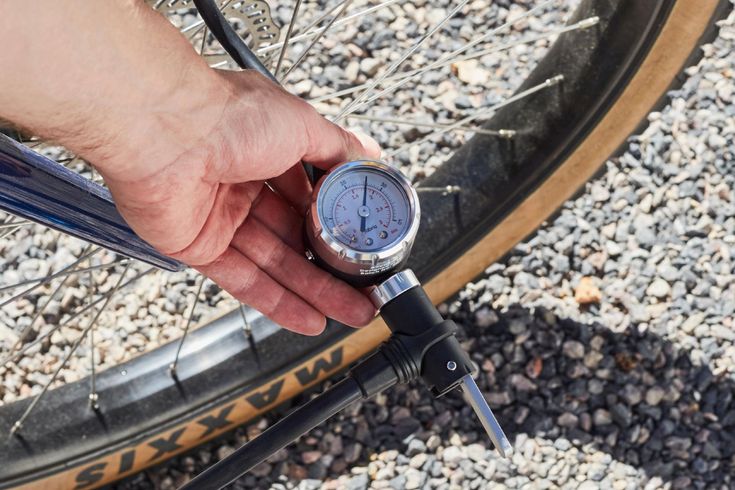
The sky’s the limit with track pumps. They basically all do the same job, some with a more premium feel than others.
From a budget Park Tool PFP8 to the absurdly expensive Silca Pista Plus, you’ll be able to find something that suits your needs.
Mini pumps work but are a lot more frustrating to use. Again, there are lots of options available from mini track-style pumps to tiny pumps that will fit in a jersey pocket. We tend to prefer mini pumps with a hose because that reduces stress (and potential damage) on the valve.
Two of our favourites have been the Truflo TIO Road and the Lezyne Micro Floor Drive HP.
One other possibility for your inflation needs is a CO2 inflator. These use compressed carbon dioxide in a small cartridge to inflate or top up a tyre really quickly. Not something you would want to use on a regular basis, but perfect for an emergency repair.
The first thing to do is to attach your pump to the valve.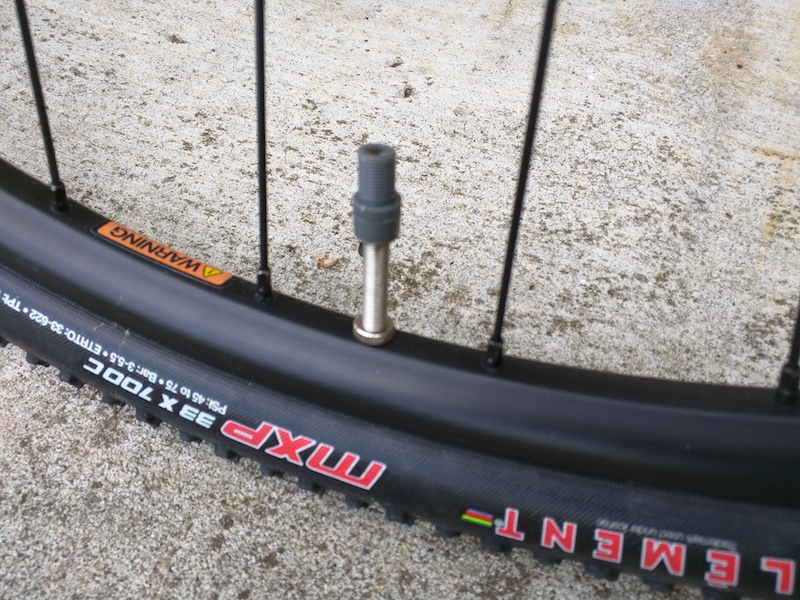
Remove the valve cap, and regardless of valve type, we find it’s good to release just a little hiss of air to ensure the valve isn’t stuck and opens and closes cleanly. Either thread-on the chuck or push it on and lock it.
If your tyre is completely flat it may initially be a bit of a struggle to fit the chuck because the valve has a tendency to push back into the rim. Simply hold the valve from behind by pushing on the outside of the tyre so that you can lock the chuck on properly.
The lockring on Presta valves (if fitted) can also help, preventing the valve from disappearing by holding it in place for you.
The connection to the valve should be air-tight. A little escaping air is normal when attaching the pump, but shouldn’t continue for long. If it does, remove and reattach the chuck. If it continues to be a problem it may be worth checking the rubber seal in the chuck to see if it is worn out and needs replacing.
Remember to be gentle with the valves – they’re delicate. That’s especially the case if you’re using a mini pump without a hose.
That’s especially the case if you’re using a mini pump without a hose.
Make sure to brace the pump with your hand wrapped around the spokes or tyre to avoid transferring too much of the pumping force to the valve, which could lead to damage.
When you start pumping make sure to use the full stroke of the pump. You’ll find that the majority of the stroke is taken up compressing the air to the point where it will then be pushed into the tyre.
If you don’t use the whole length of the pump, the air won’t be pushed out of the bottom – you need to generate overpressure in order to move the air from the pump to the tyre. Instead, you’ll just end up with the shaft bobbing around doing nothing.
With a track pump, don’t just use your arms, use your body weight for the downstroke and pumping will become a lot easier.
You may sometimes find that the pump doesn’t seem to hold pressure, especially when inflating the tyre from completely flat. This may especially be the case with an older pump where seals may be slightly sticky.
We find it helps to pump vigorously initially, to generate enough back-pressure (i.e. pushing back from the tyre side) in the system to ensure that valves are actuated properly and seal up, in turn inflating the tyre. Keep on going until you get the right pressure.
When removing the chuck from the valve there is usually an audible hiss of air being lost. This is usually from the pump rather than the valve side. Pressured air in the hose and chuck is just escaping.
A pump gets the air in your tyre. The operating principle is simple; you increase the pressure inside the pump until it exceeds that inside the tyre. This ‘overpressure’ forces air into the tyre, increasing its pressure too.
A pump is just a manually actuated piston. On a pump’s downstroke, a check valve (allows air-flow in one direction) seals the piston chamber, resulting in air being pressurised as the pump is compressed. That pressure increases until it exceeds that inside the tyre.
At this point, a second one-way valve will allow air to flow from the pressurised pump chamber into the tyre. You extend the pump again, the check valve opens to refill the chamber with air and you repeat the process.
To prevent the pressure in the tyre leaking back out, the second check valve at the base of the pump closes. If it wasn’t there, the pump would just shoot open again.
Presta valves will close automatically, but the sprung Schrader valves are usually held open by a pin in the pump valve attachment (this means you don’t need any extra effort when pumping to overcome the pressure exerted by the spring.)
The head of the pump is also known as the chuck.Oliver Woodman / Immediate Media
The chuck is the part that attaches the pump to the valve and forms an airtight seal over the valve. One of two designs exist: threaded or push-on with a locking lever. Most pumps nowadays are also adaptable to either Schrader or Presta valves.
They will either feature two different attachment points or an adjustable chuck that can be changed to suit both types.
For larger pumps (and many mini-pumps too) the chuck is often on a hose, preventing your pumping force from damaging the valve.
Pumps will often include a pressure gauge to check the pressure inside your tyre.
The right tyre pressure is perhaps one of the most contentious subjects, but there are definitely a few guidelines that you can use.
As a general rule, your tyre should be solid enough to prevent the tyre deflecting all the way to the rim, though compliant enough to provide some suspension – after all, the beauty of a pneumatic tyre is that you don’t have to have a bone-jarringly hard ride.
Most tyres will have a minimum and maximum pressure rating printed on the side. It’s advisable not to go under or over those limits because manufacturers have specified them for a reason. Of course, that means there’s still a lot of room to play with pressure and what works for you.
For mountain bikes the problem is relatively easier, with the usual aim being to improve traction, cornering and shock absorption.
As a general rule, riders try to run as low a pressure as possible without having it so soft that the tyre squirms under cornering load or deflects enough for damage to occur to the rim.
For road bikes it becomes a little more complicated because along with traction and comfort, rolling resistance (how efficiently a tyre rolls) is a major consideration as well.
Contrary to what many assume, the new school of thought seems to suggest that harder is not necessarily faster.
On all but the smoothest of surfaces, a hard tyre will not have as much suspension, and instead of the tyre being able to deflect and conform to irregularities – keeping the bike moving forward – you will get bounced around.
On all but the flattest of surfaces softer tyre pressures can provide more comfort and be more efficient.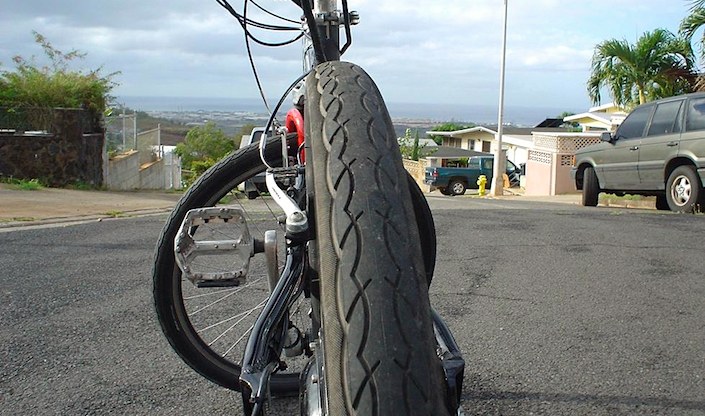
A tyre pressure drop chart.Frank Berto (Bicycle Quarterly)
The most comprehensive research into this was underatken by Frank Berto, who put together a tyre pressure inflation chart.
This testing determined that a 20 per cent tyre drop (the amount the tyre compresses when load is applied, measured by the height from the ground to the rim) was the optimum balance.
Incidentally, some manufacturers recommend a similar level of tyre drop, though the figure is open to some debate.
This value does provide a good starting point to experiment with tyre pressures. The chart looks at individual wheel load – i.e. your and your bike’s weight on each wheel (40 per cent front / 60 per cent rear is a good starting point) – and calculates the pressure for each accordingly.
You need not always get your pump/gauge out to check for tyre pressure. BikeRadar / Immediate Media
BikeRadar / Immediate Media
It’s a good idea to check your tyres before each ride. Usually, that just involves giving them a squeeze by hand to check the pressure.
No, it’s not super accurate, but you’ll quickly get a feel for the pressure in your tyres and be able to tell whether they need pumping up or not.
If you start to get really nerdy about it, you may end up investing in a pressure gauge, which can read the pressures in your tyres very accurately.
That’s especially helpful for mountain bikes where a few psi can make a large difference to handling and grip, but equally applicable on a road bike to find the exact pressure that works for you.
BikeRadar provides the world's best riding advice. We're here to help you get the most out of your time on the bike, whether you're a road rider, mountain biker, gravel rider, cycle commuter or anything in between. You can expect the latest news and features, in-depth reviews from our expert team of testers, impartial buying advice, how-to tips and plenty more.
Hello everyone! In this article, we will tell you how to pump up a wheel on a bicycle. We'll give beginners tips on getting the right tire pressure, talk about different pumps, and cover all the challenges you might run into. Go!
To begin with, let's deal with tire pressure, since a lot depends on it, for example:
Bicycle manufacturers usually list the optimum bead pressure range, which can vary greatly depending on wheel width. For example, for fat bikes, the optimal pressure is from 0.5 to 2 atmospheres, for mountain bikes from 2 to 4 atmospheres. Well, for road models, suitable pressure ranges from 5 to 8 atmospheres.
Based on this, it can be concluded that the minimum pressure is used where it is necessary to ensure good grip on uneven surfaces.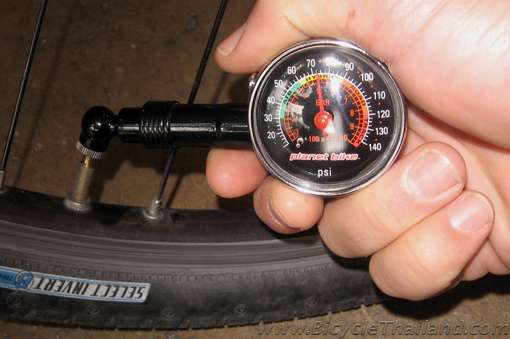 Well, the maximum pressure increases the roll on a flat surface. Therefore, we recommend that you inflate the wheels according to how you plan to ride. If you don't have a particular preference, inflate at a medium setting for good rolling and traction. nine0003
Well, the maximum pressure increases the roll on a flat surface. Therefore, we recommend that you inflate the wheels according to how you plan to ride. If you don't have a particular preference, inflate at a medium setting for good rolling and traction. nine0003
The weight of the cyclist should also be taken into account - if you weigh little, then it is better to choose a pressure closer to the minimum, and vice versa.
There are three standards of nipples used on modern bicycles. This is:
Schroeder is the best known type of nipple, which is also used in cars. Therefore, you will meet him on most bikes. nine0003
Presta is a thin nipple often referred to as a French nipple. These nipples are most commonly found on high-end bikes. As for the Dunlop standard nipples, they are very rare.
Some may think that each nipple requires a special pump. But this is not so - it is enough to purchase a regular car pump and an adapter for your type of nipple.
If you don't have a car pump, you can purchase a bicycle pump. Most of the models on sale are universal, and support all nipple standards at once. Bicycle pumps are:
Compact pumps pump the wheels for a long time, but they take up little space. They can be mounted directly on the frame, and always carry with you, which is very convenient.
Floor pumps are more comfortable to use as they blow in more air with one push. In addition, they are equipped with a pressure gauge that allows you to control tire pressure. These pumps are an indispensable tool for road bike owners. nine0003
That's all for today. Thank you for your attention, if this article was useful to you, please like us or share it with your friends. See you again.
When buying a bike, many do not even think about the fact that the convenience and comfort when riding it is achieved by properly selected tire pressure.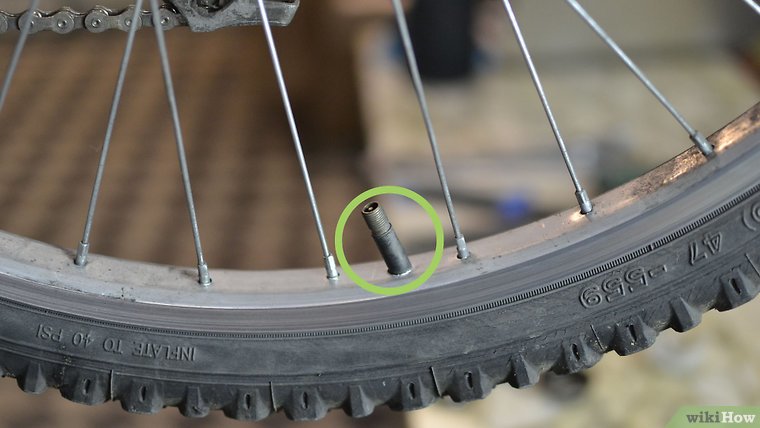 The service life of the bicycle, the speed of riding, the degree of tire wear, safety, control of the two-wheeled friend depends on how the wheels are inflated.
The service life of the bicycle, the speed of riding, the degree of tire wear, safety, control of the two-wheeled friend depends on how the wheels are inflated.
Many cyclists believe that inflating the tires is only necessary for a good bike ride. However, flat tires have a wider area of contact with the road, which means that grip will be better, but it will be very difficult to accelerate to a speed of 30-35 km / h on such tires.
When inflating your tires, you should always consider the type of terrain or surface you will be driving on. If the walk is supposed to be on an asphalt road, the tire pressure of the bicycle should be close to the maximum allowable value. Elastic wheels on a flat surface will provide a smooth rolling and high speed of movement. nine0003
For cross-country riding with unpaved paths, it is better to set the tire pressure to medium tolerable, so that you can ride long distances in comfort and convenience. At high pressure, the grip of the wheel with the road will be minimal, respectively, all holes, pebbles, and bumps on the road will be sensitive. And with flat tires, the likelihood of damage to the wheel or puncture of the chamber increases.
At high pressure, the grip of the wheel with the road will be minimal, respectively, all holes, pebbles, and bumps on the road will be sensitive. And with flat tires, the likelihood of damage to the wheel or puncture of the chamber increases.
In order to protect yourself on the road, as well as to keep the bicycle or its individual parts intact, you need to know exactly the lower and upper limits of permissible values, to what pressure the bicycle wheels can be pumped. nine0003
Information about tire pressure gives you an advantage when cycling:

Forget the old "grandfather" way to check the wheel by pressing with your fingers. No need to rely on tactile sensations, trying to feel with your hand the degree of rubber penetration on the tire. The air leaves the wheel gradually, through the pores in the rubber. Within 2-3 weeks, the pressure decreases by 0.1-0.2 atmospheres, but you cannot determine this with your fingers. The exact value at any time will help determine the pressure gauge that every cyclist should have in his arsenal. With its help, it is simple, with a minimum error, the level of pressure in bicycle tires is measured. A pump with a pressure gauge (floor or manual) will become an indispensable tool for cyclists. nine0003
There are three standard values in which bicycle tire pressure is measured.
kPa = 14.504 PSI
All these units are used to some extent - in different countries, by different manufacturers. For residents of Russia and the post-Soviet space, the change in bars is more familiar, since this unit is clearly associated with the pressure of the 1st Earth's atmosphere at ocean level. In America and Western Europe, a popular unit is PSI, as they actively use pounds and inches in measurements. Pascals are the least used unit of measurement, but the most modern. Some bicycle manufacturers write data on the wheels about the allowable pressures in all three systems. nine0003
For residents of Russia and the post-Soviet space, the change in bars is more familiar, since this unit is clearly associated with the pressure of the 1st Earth's atmosphere at ocean level. In America and Western Europe, a popular unit is PSI, as they actively use pounds and inches in measurements. Pascals are the least used unit of measurement, but the most modern. Some bicycle manufacturers write data on the wheels about the allowable pressures in all three systems. nine0003
Manufacturers indicate on the sidewall of the tire how many atmospheres to pump the bicycle wheels. Specifies the range within which the owner of the "iron horse" determines the desired values, depending on the specific factors of riding his bike. Values in the range are labeled from min to max, in two or all three dimensions. Numbers up to 10 are atmospheres (or BAR), tens-hundreds are PSI, and six-digit values \u200b\u200band with the prefix “k” / kilo are Pascals. nine0003
When inflating a tire, you must strictly follow the manufacturer's recommendations and try not to go beyond both the minimum and maximum pressure levels indicated on the tire. Moreover, it is better to leave a small margin of 0.2-0.5 BAR, both in one direction and in the other, so that the tire does not burst.
Moreover, it is better to leave a small margin of 0.2-0.5 BAR, both in one direction and in the other, so that the tire does not burst.
The pressure in the wheel is kept by the tire, not the tube, so there is no single standard for its value. There are several significant factors that determine how much you need to pump the wheels on a bicycle. nine0003
The type of tire is determined by the surface of the track on which the cyclist will predominantly ride. Accordingly, the level of inflation of the bicycle wheel will be different. There is a direct dependence on the roughness of the tread and the width of the wheel - the more lugs and the wider the wheel, the lower the pressure should be. Empirically, cyclists quickly determine how many atmospheres should be in the tires of their bicycle
Many cyclists do not realize that air temperature affects the pressure level in bicycle tires. From the course of school physics, we recall that when heated, bodies expand. This means that in hot sunny weather, the pressure inside the air chamber will increase without additional pumping. Conversely, on cold winter days, a decrease in tire pressure is quickly felt due to low temperatures. So, when going for a bike ride in the cold season, the pressure indicators need to be adjusted a little higher than usual, and in the summer heat, let the air out a little. It is worth noting that when going on a bike ride, you should always take into account the weather conditions. nine0003
From the course of school physics, we recall that when heated, bodies expand. This means that in hot sunny weather, the pressure inside the air chamber will increase without additional pumping. Conversely, on cold winter days, a decrease in tire pressure is quickly felt due to low temperatures. So, when going for a bike ride in the cold season, the pressure indicators need to be adjusted a little higher than usual, and in the summer heat, let the air out a little. It is worth noting that when going on a bike ride, you should always take into account the weather conditions. nine0003
It is important to consider the load on the bike created by the weight of the cyclist, especially the fact that most of it is on the rear wheel. Therefore, the degree of its pumping should be slightly higher than the front, the optimal difference is 10%.
To calculate the optimal tire pressure for a bicycle, given the weight of its rider, you can use the table:
Rider weight (kg) Pressure (atmosphere) Pressure (PSI)
The nature, riding style and type of bike also affect tire pressure.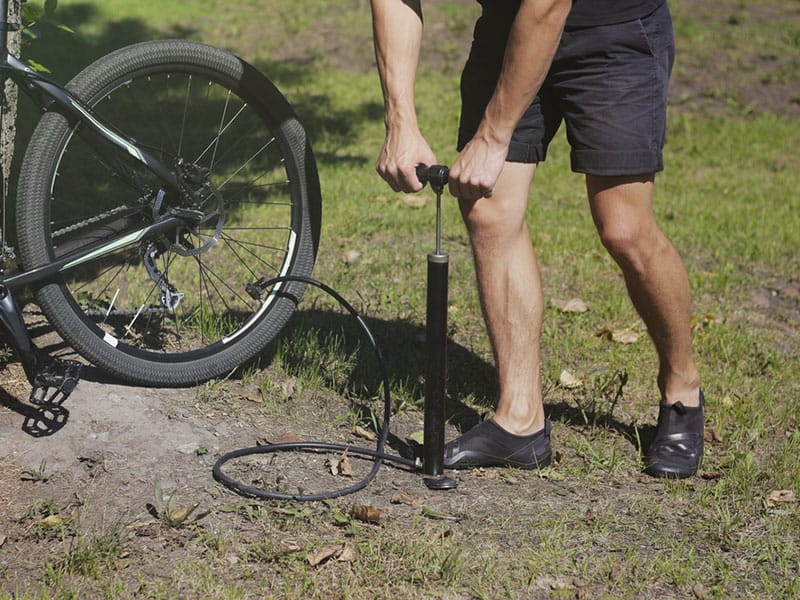 Buyers who prefer an active pastime often opt for mountain bikes with 26-inch wheels, which ride well both on city streets and in rough terrain.
Buyers who prefer an active pastime often opt for mountain bikes with 26-inch wheels, which ride well both on city streets and in rough terrain.
To understand to what pressure to inflate the wheels of a bicycle, it is necessary to take into account the features of both the bike itself and other, at first glance, weightless factors. For example, weaving threads on a tire, rim thickness, driving style. The likelihood of a tire coming off a wide rim is much less than a narrow rim, because a wider rim will hold the tire better than a thin one. Mountain biking already by its name suggests the presence of a difficult surface on the track, with possible obstacles and bumps. The driving style is more aggressive than on a smooth, calm trajectory, it obliges you to increase the tire pressure to a level slightly less than the upper limit. nine0003
The diameter of the wheel will also affect the selection of the optimal pressure value, since the larger it is, the higher the volume of air pumped will be.